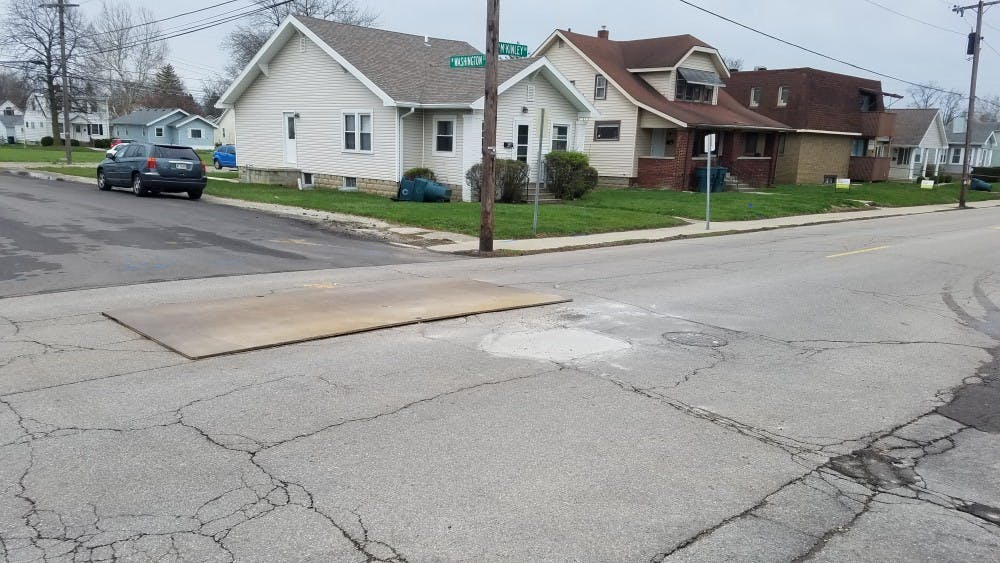The sinkhole is fixed, until commencement that is.
The City of Muncie temporarily fixed the sinkhole Friday, reopening North McKinley Avenue between West Gilbert and West Main street and West Washington Street between North Calvert Street and North College Avenue.
"So what they did was, they patched it Friday and they back filled it with concrete temporarily so the traffic can start rolling through McKinley today [Saturday], or this morning," said Chad Love, a camera crew inspector for the Muncie Sanitary District.

After a sinkhole was discovered at North McKinley Avenue and West Washington Street Thursday, crews temporarily repaired it Friday to reopen the road. Nick Williams, DN Photo
The sinkhole was caused, Love said, after the manhole at the intersection fell in and broke the sewer line beneath North McKinley Avenue and West Washington Street.
EARLIER:
Ball State University Police closed an intersection near the south side of campus due to a sinkhole.
The sinkhole, which is in the middle of West Washington Street and North McKinley Avenue, was discovered around 5 p.m. Thursday.
A BSUInform email, which was sent out Thursday night, said the City of Muncie is working to repair the sinkhole.
As a result, the following roads are closed:
- North McKinley Avenue between West Gilbert and West Main streets
- West Washington Street between North Calvert Street and North College Avenue.
The intersections, according to the email, will remain closed for a few days.
The Muncie sinkhole follows another that nearly swallowed a vehicle in Hobart, Indiana, Wednesday. The female driver was taken to the hospital, and work crews are repairing the northwest Indiana street this week.
Last June, another sinkhole opened in Muncie on McCulloch Boulevard east of the Walnut Street and Granville Avenue split. At the time, Mayor Dennis Tyler told Indiana Public Radio the hole was around 10 feet deep and 6 feet wide.
Sinkholes appear across the United States, but they're not as common in Indiana, according to the U.S. Geological Survey. Most sinkholes usually form as a result of erosion caused by frequent exposure to water. As bedrock is whittled away by water — which becomes acidic from absorbing carbon dioxide and interacting with plants — conduits form, making it easier for the sinkhole to develop.
On roadways, however, sinkholes are often impacted by human activity. Large amounts of foot or vehicle traffic and heavy increases in water flow can cause the holes to form, and they're also likely to show up in places near storm drains or where water sources are diverted or cut off.
Sinkholes can cause more than $300 million worth of damage each year in the United States, according to a November 2016 Popular Science article. While sinkholes can damage roads and yards, dangers associated with sinkholes can become disastrous — including swallowing up buildings, animals and people, in serious cases.
This story will be updated.





